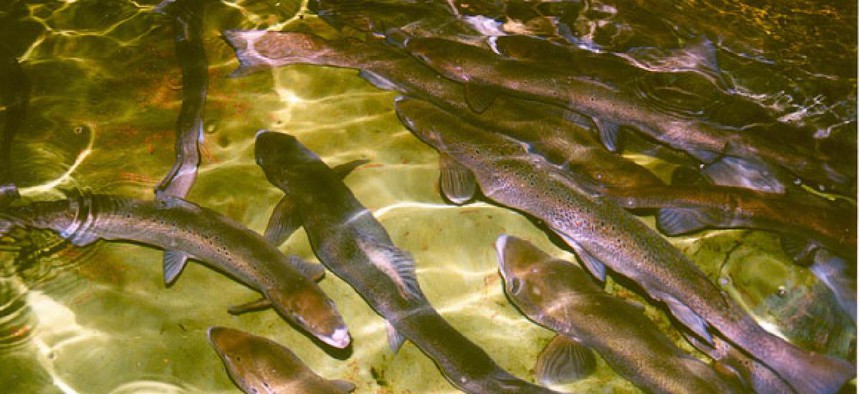
United States Fish and Wildlife Service
'Juice Is Not Worth the Squeeze' of Merging Two Wildlife Agencies, Report Finds
GAO notes many benefits to combining NMFS and FWS, but agency officials say it is not worth it.
Merging two marine life oversight entities would not be worth the trouble, stakeholders told a watchdog agency, despite the possibility of improving collaboration and saving money.
The National Marine Fisheries Service and the Fish and Wildlife Service provide many similar functions, including protecting endangered marine species and restoring fish and wildlife habitat, according to a Government Accountability Office report. The two agencies are distinct enough, however, to warrant their current separation, the watchdog suggested.
NMFS is a division of the National Oceanographic and Atmospheric Administration -- which itself is housed in the Commerce Department -- while FWS is part of the Interior Department. The primary difference between the two organizations is in habitat types they oversee, as the FWS often deals with species found on land and fresh water, while NMFS is more involved with animals in other marine environments. GAO conducted interviews with 97 former and current agency stakeholders, who found both benefits and drawbacks to merging the two organizations.
One benefit would be implementing the Endangered Species Act more efficiently, as a single agency would be able to monitor proposals for construction projects on protected land, such as building a road. However, some argued the process would be equally as time consuming no matter how many agencies were involved.
Many stakeholders predicted significant cost savings resulting from a merger, but could not provide an estimate due to the uncertainty of how the reorganization would take shape. NMFS employs 2,800 workers and had a 2012 budget of $880 million, while FWS has 9,500 on staff and a $1.5 billion annual budget.
GAO found that a merger could disrupt management of fisheries, as a new agency’s lawyers, for example, would not have experience in ensuring regulators stayed in line with current laws. This, on top of other “transition costs,” would be a major drawback to reorganization, the report said. Differing priorities at different departments could also be a negative consequence of a merger, the auditors said, as Interior might focus too heavily on environmental impacts of a new proposal while Commerce also accounted for the economics of the project.
Over the past few decades, dozens of presidential and congressional commissions have conducted studies to reorganize NMFS, FWS or both. No proposal has ever been enacted, however, as investigators often found the need for each entity to compete for funds under one agency would ultimately be detrimental to their core missions.
While GAO did not make an official recommendation, a few stakeholders summarized the prevailing opinion by saying, “the juice is not worth the squeeze” of reorganizing the agencies.
NEXT STORY: Taking a Snapshot of the Human Immune System







